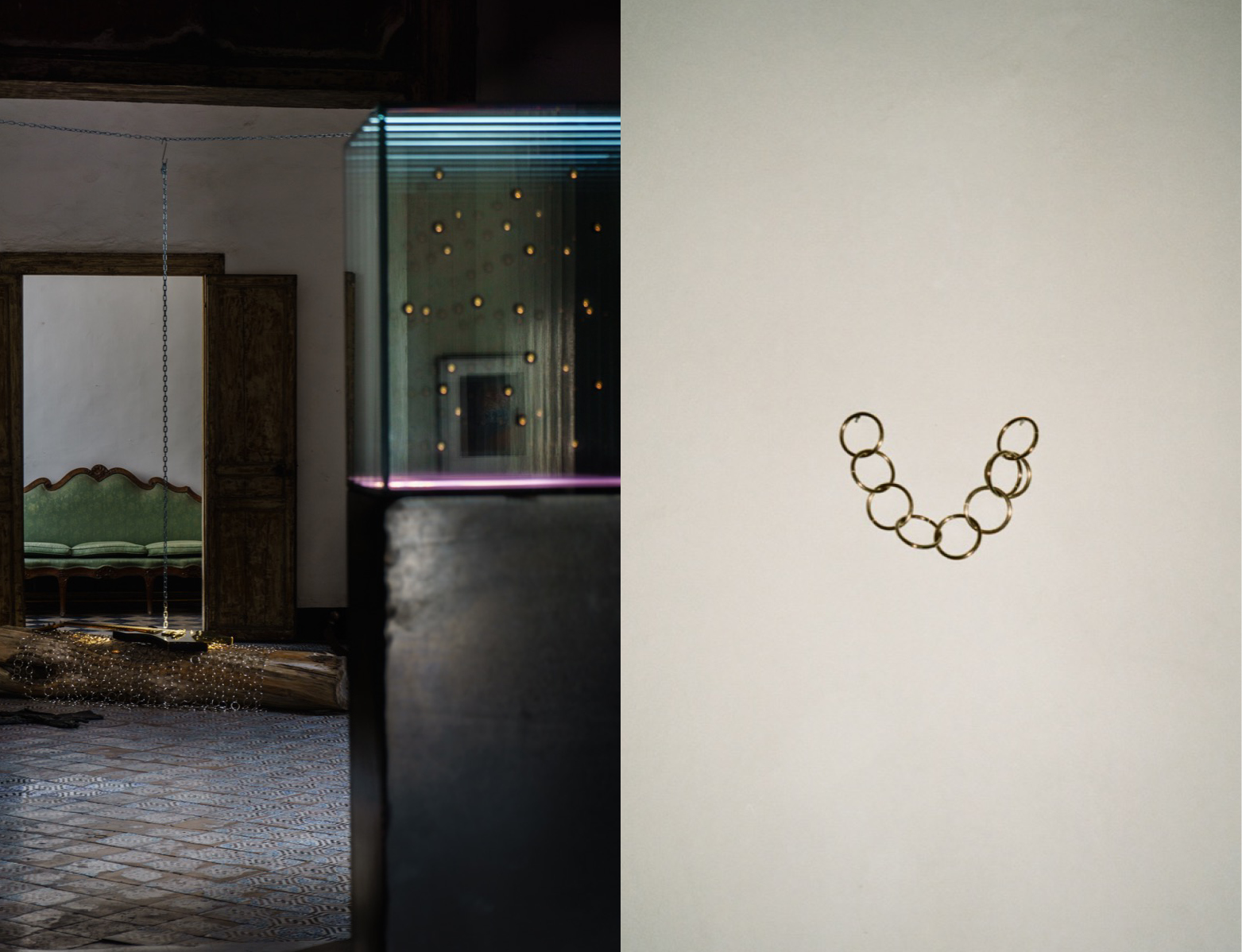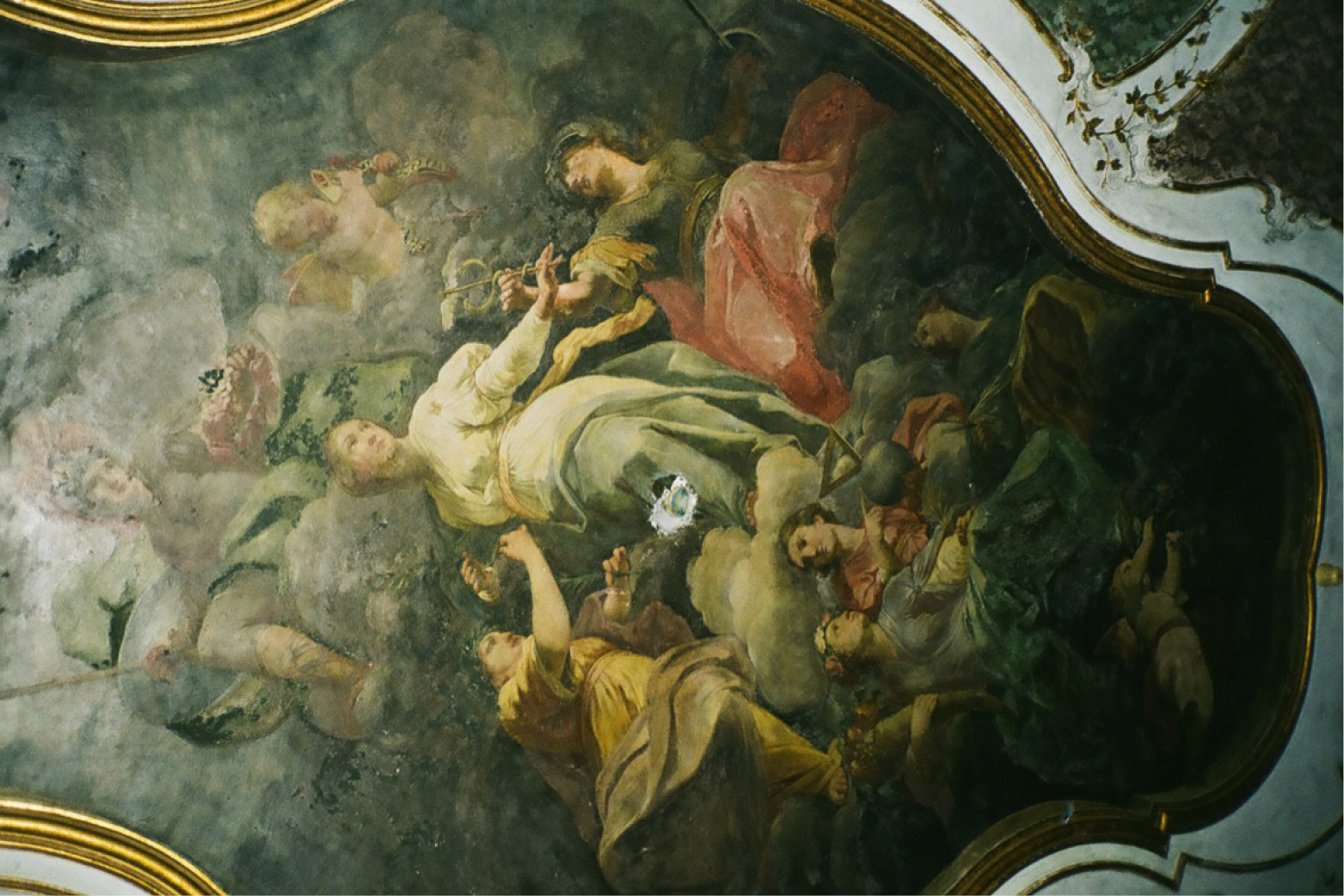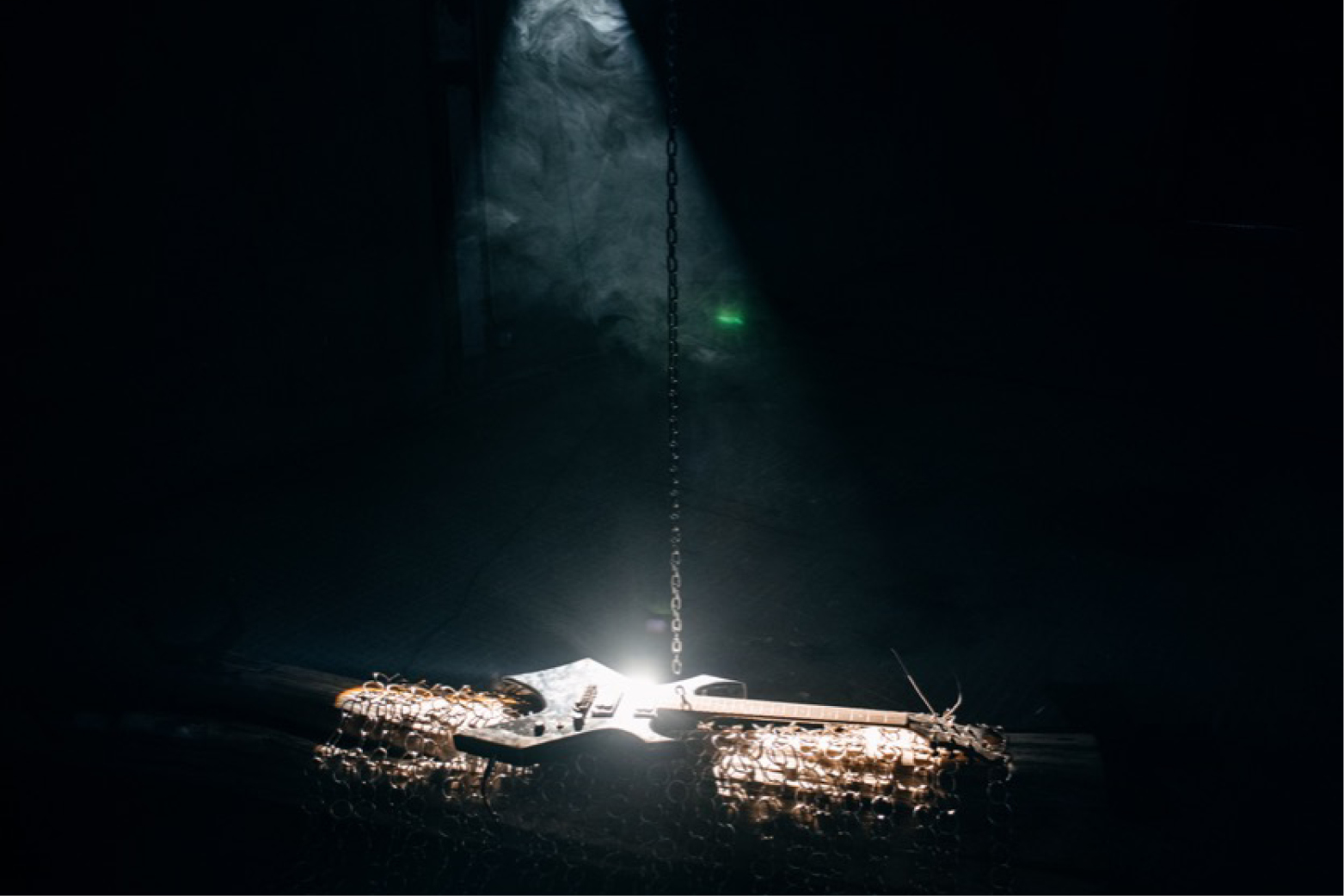This process was enacted in the work’s sound. As the chain touched the guitar, the sound that rose joined the sounds that decayed of those that had come before. Rising, decaying. Like breath. As my breath followed the chain and slowed, I became more aware of myself as matter.
The second room could not contain Edoardo Dionea Cicconi’s Untitled 0000, consisting of a smoke machine, strobe lighting, and a plinth made of glass. Inside the plinth there were layers of fine cut glass that looked like particles, suspended. This inside-out plinth (of course, a plinth is usually solid, and things go on top of it) is a gesture that demonstrates the artist’s scope of ambition and impulse to disrupt. He states of the work that it ‘wants to symbolise the fragmentation of the space-time continuum’, no less. In disrupting the senses, the artist points to their anarchic potential. I found it interesting to consider an anarchy of the senses. Elsewhere in his statement, Edoardo expands: ‘Each flash is a fragment, a portion of reality […] Linearity breaks down, creating a mix of past memories and potential visions of the future.’ I really liked this collapse into the body and all that is strange in our relationship to time. I think that’s really political and worth dwelling on. Here, instead of narrative or history, truth or hegemony, we find unsettling and untrustworthy spaces: Lynchian déjà vu, Proustian nostalgia, hauntings, premonitions and memories of the future.
The third room belonged to Floria Sigismondi, perhaps best known for her work on The Handmaid’s Tale televisions series, the film The Runaways and, in the 90s and 2000s, directing music videos for artists like David Bowie, The White Stripes and Marilyn Manson. It was a perfectly formed room, in which hung small, framed works in apt proportion, appropriately spaced. But beyond that, it was chaos. Looking closer, we find bodies that are beside themselves. Bodies that are displaced, deranged, dismembered. These images – film stills and self-portraits – were taken from the artist’s 1999 publication Redemption. It was strange to see these photographs so removed from their context, it was as if they were very far away and you needed to lean in to hear them. From the 90s, from a publication, from a film. I felt a bit like the neighbourhood boys of The Virgin Suicides – obsessed with the girls who lived cloistered in the house yet forced to get by on glimpses and scraps. These were images that were maddeningly beautiful and definitely off limits. Each was a poem of the macabre, delicate and dark. These works are stubborn in their craft. They give the impression of an uncompromising fidelity to the artist’s vision, which, in its strength, promises to transform anything in its path. Floria’s tender and rigorous works bring the viewer back to themselves, while inviting escape.
Res:In #2 showed at Pallazzo Imperatore, Palermo; after party was hosted by L-Y-O-N. Res:In #2 went on to show at Scalo Lambrate, Milan, and, separately, Jordan Hemingway and Alban Adam will show Withstand the Fall of Time at 3537, Paris, opening 29 October, 2021.
 https://www.nastymagazine.com/wp-content/uploads/2021/01/Mareo-Rodriguez-x-Nasty-Magazine-008.jpg
1497
1500
admin
https://www.nastymagazine.com/wp-content/uploads/2015/02/new-logo-basker-WHITE4.png
admin2021-02-03 13:28:422021-02-03 11:34:42Mareo Rodriguez / Balance and duality
https://www.nastymagazine.com/wp-content/uploads/2021/01/Mareo-Rodriguez-x-Nasty-Magazine-008.jpg
1497
1500
admin
https://www.nastymagazine.com/wp-content/uploads/2015/02/new-logo-basker-WHITE4.png
admin2021-02-03 13:28:422021-02-03 11:34:42Mareo Rodriguez / Balance and duality





















